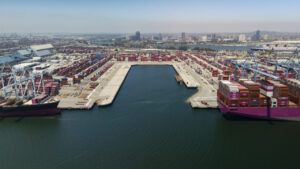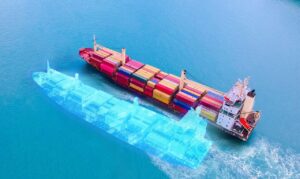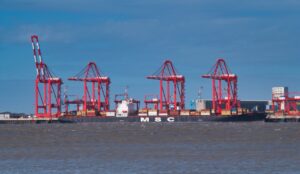Swiss marine power company WinGD has completed shop testing for its variable compression ratio (VCR) technology.
The VCR shop test was accomplished at Mitsui E&S DU (MESDU) facilities in Japan, where the first X‑DF2.0 engines with VCR are being produced for bulk ships operated by NYK Lines.
The six-cylinder, 62-bore engine delivered approximately 30 per cent lower methane emissions than the identical engine without VCR, taking overall slip to around 0.83 per cent of gas usage.
This is less than half of the EU (and tentative IMO) default slip for low-pressure, low-speed dual-fuel engines under marine standards. The decrease is predicted to be considerably higher in engines with bigger bores.
READ: WinGD trials ammonia-fuelled X-DF-A engine
WinGD declares that VCR technology improves combustion by automatically adjusting engine compression ratio based on load, fuel type, and environmental conditions.
This technology is applicable to all new X-DF engines, and a refit kit has already been created and installed on a pilot case vessel, with promising results.
Both European and International Maritime Organization (IMO) regulations will contain procedures for updating default methane slip values and allowing shipping firms to provide real methane slip readings, allowing ship operators to lower carbon costs as methane slip improves.
WinGD supports the development of these mechanisms through regulatory associations. X-DF engines have low-NOx design and use rational emission control strategies, as required by IMO’s NOx Technical Code updates.
This eliminates the need for WinGD to adjust brake-specific fuel consumption figures or tolerances. Reduced methane emissions contribute to a lower GHG effect, independent of the LNG source.
READ: WinGD’s on-engine NOx abatement system set for commercial debut
Peter Krähenbühl, Vice President Product Centre, WinGD, said: “Over the past decade we’ve worked to ensure that the unmatched reliability and low capital expenditure of X-DF engines are supported by the lowest possible overall GHG emissions.
“The fuel consumption and methane slip reductions achieved by VCR bring us to that point. Low GHG emissions will be fundamental for shipowners as carbon pricing measures take effect, which is why we have already seen strong uptake, with well over 100 new X-DF engines ordered with VCR so far.”








